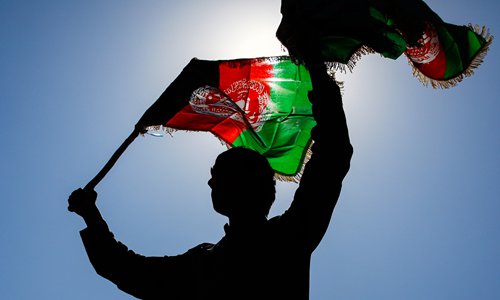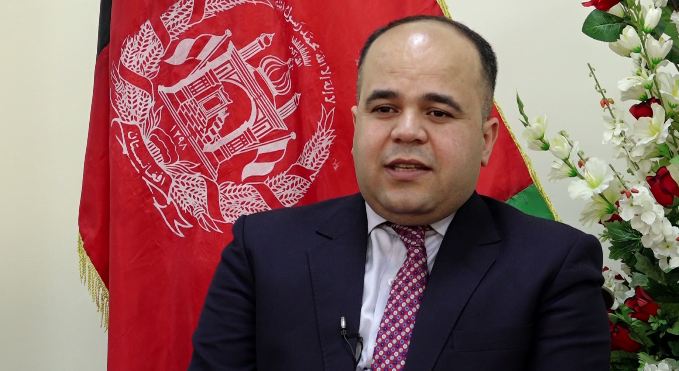China has not contributed to the economic development of Afghanistan. We have not seen any substantial assistance from China.
Publish dateMonday 28 October 2019 - 23:43
Story Code : 194191
Taliban has been invited to China to participate in the intra-Afghan dialogue - has attracted worldwide attention. The move shows China's contribution to Afghanistan's peace and reconciliation process. But some people are turning a blind eye to it. Alice Wells, US acting assistant secretary for South and Central Asia, claimed in September that "China has not contributed to the economic development of Afghanistan. We have not seen any substantial assistance from China." Yao Jing, Chinese ambassador to Pakistan and former ambassador to Afghanistan, soon lashed out at Wells for being "ignorant about what China's cooperation with Afghanistan is."
China is Afghanistan's major trading partner. In November 2018, an air trade corridor between the two was established, which, according to Afghan official estimates, would help Afghanistan transport 23,000 tons of pine nuts to the Chinese market annually, with up to $800 million in revenue. China is also stepping up efforts on Afghan infrastructure programs, including highways and electrical transmission projects.
When Wells said the China-proposed Belt and Road initiative (BRI) was a "slogan" and "not any reality" in Afghanistan, she made people wonder what "reality" meant. Does it mean US fighter jets and tanks, or the US own strategic calculation in Afghanistan - offsetting Russia's influence in Central Asia, containing Iran and China, or US double standards on terrorism?
China has been stepping up efforts to provide economic assistance to regional countries, including - but not limited to - Afghanistan. Sluggish economies are one of the fundamental reasons for the vicious cycle of chaos in the region. Beijing's approach is to improve local infrastructure, increase local employment opportunities and income through investment, assistance and personnel training under the framework of the BRI. The method will lay the foundation for the region's future development. It is about interconnecting the entire area, which will help solve Afghanistan's fragile situation.
Conflicts in Afghanistan are complicated. Internal ethnic and political divisions, the hostility between the US and Taliban, contradictions between Washington and the Afghan government, and multiple disputes and differences between major powers and regional countries are intertwined. Creating a solution is thus not easy. The US approach failed to bring hope for peace in the country. Worse, negotiations between the US and Taliban collapsed in September after Washington walked away from their talks.
China initiated an "Afghan-led, Afghan-owned" way to mediate in the Afghan conflict. The philosophy is based on the Afghanistan's own situation and the international community's universal principle of dealing with similar issues. Beijing has been promoting talks between different internal political forces and firmly believes that the future of Afghanistan should be chosen and grasped by Afghan people. It is offering help without meddling in other's affairs. Its proposal, without any preconditions, is more beneficial to bridging the gap between rivals in Afghanistan.
Beijing's solution needs no approval from Washington. But the latter, which has let people down many times by providing no efficient resolution to boost the Afghan peace process, accused China of alleged zero contributions to Afghanistan. What is the US up to?
China is Afghanistan's major trading partner. In November 2018, an air trade corridor between the two was established, which, according to Afghan official estimates, would help Afghanistan transport 23,000 tons of pine nuts to the Chinese market annually, with up to $800 million in revenue. China is also stepping up efforts on Afghan infrastructure programs, including highways and electrical transmission projects.
When Wells said the China-proposed Belt and Road initiative (BRI) was a "slogan" and "not any reality" in Afghanistan, she made people wonder what "reality" meant. Does it mean US fighter jets and tanks, or the US own strategic calculation in Afghanistan - offsetting Russia's influence in Central Asia, containing Iran and China, or US double standards on terrorism?
China has been stepping up efforts to provide economic assistance to regional countries, including - but not limited to - Afghanistan. Sluggish economies are one of the fundamental reasons for the vicious cycle of chaos in the region. Beijing's approach is to improve local infrastructure, increase local employment opportunities and income through investment, assistance and personnel training under the framework of the BRI. The method will lay the foundation for the region's future development. It is about interconnecting the entire area, which will help solve Afghanistan's fragile situation.
Conflicts in Afghanistan are complicated. Internal ethnic and political divisions, the hostility between the US and Taliban, contradictions between Washington and the Afghan government, and multiple disputes and differences between major powers and regional countries are intertwined. Creating a solution is thus not easy. The US approach failed to bring hope for peace in the country. Worse, negotiations between the US and Taliban collapsed in September after Washington walked away from their talks.
China initiated an "Afghan-led, Afghan-owned" way to mediate in the Afghan conflict. The philosophy is based on the Afghanistan's own situation and the international community's universal principle of dealing with similar issues. Beijing has been promoting talks between different internal political forces and firmly believes that the future of Afghanistan should be chosen and grasped by Afghan people. It is offering help without meddling in other's affairs. Its proposal, without any preconditions, is more beneficial to bridging the gap between rivals in Afghanistan.
Beijing's solution needs no approval from Washington. But the latter, which has let people down many times by providing no efficient resolution to boost the Afghan peace process, accused China of alleged zero contributions to Afghanistan. What is the US up to?
avapress.net/vdceoe8zzjh8ozi.1kbj.html
Tags
Top hits












